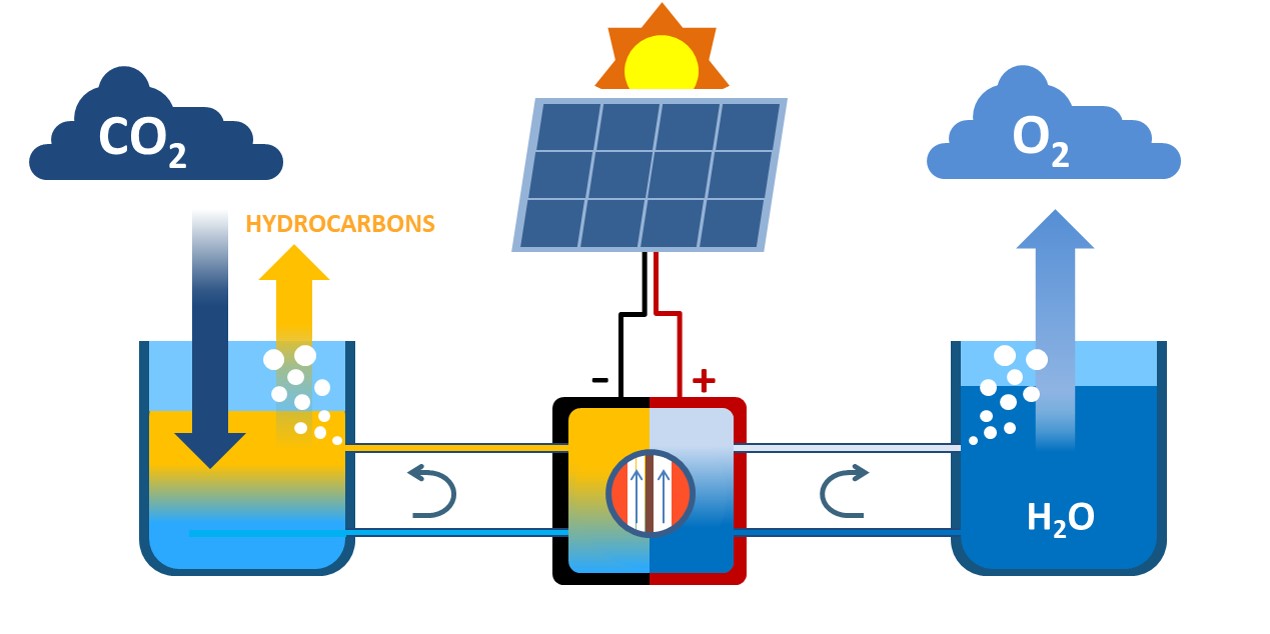Artificial plants make fuel from CO2 and sunlight
- D-CHAB
- LAC
- Highlights
A team of European scientists at Collège de France, Paris, led by Prof. Victor Mougel, who joined ETH Zürich in December 2018, created a system that imitates plants, converting CO2, water, and sunlight into sustainable fuels and value-added chemicals.
The study, which reports a record sun to hydrocarbon efficiency of 2.3%, was recently published in the prestigious scientific journal PNAS, and received broad media attention. The new all-in-one device imitates plants, and also uses sunlight to transform CO2 and water into sustainable fuels and value-added chemicals. This had been achieved previously, but now the researchers managed to outperform plants – their process is twice as efficient– and using low-cost materials.

An inexpensive system for real-life conditions
“Other artificial photosynthesis devices use very expensive metals like iridium and silver, but we don’t need that” explains Victor Mougel. “Our system is designed with earth-abundant metals, products that are cheap and do not come from conflict minerals,” he adds. One of the key parts of this new artificial plant is the technology behind its leaves – the solar cells that capture light and transform it into energy. The approach uses cost-efficient perovskite solar cells that can be literally printed onto any surface and are water resistant, making the device actually ready to use in real life.
Reducing carbon dioxide in the air
Finally, since the device uses carbon dioxide as its only carbon source for producing fuels and chemicals, it could eventually lead to a sustainable solution to the accumulation of greenhouse gases in our atmosphere. Plants produce sugar, but these devices yield fuels and value-added chemicals that can be fed into our current supply chains swimmingly. “Devices like this ‘artificial plant’ bring us much closer to a closed-cycle economy,” says Mougel. “Imagine a world where fuels came from the very same carbon dioxide that we produce when burning them,” he explains. “Potentially, we could stop carbon dioxide emissions and limit the effects of climate change.”
Among the newspapers and radio stations which covered the research paper were also the British The Times and the French Le Figaro.
References
Tran Ngoc Huan, Daniel Alves Dalla Corte, Sarah Lamaison, Dilan Karapinar, Lukas Lutz, Nicolas Menguy, Martin Foldyna, Silver-Hamill Turren-Cruz, Anders Hagfeldt, Federico Bella, Marc Fontecave, and Victor Mougel: Low-cost high-efficiency system for solar-driven conversion of CO2 to hydrocarbons. PNAS 2019, March 27, DOI: external page 10.1073/pnas.1815412116.
The Times: external page Artificial plant mimics leaf to make fuel from sunlight. March 26, 2019.
Figaro: external page Piéger le CO2 pour produire du carburant. April 8, 2019.